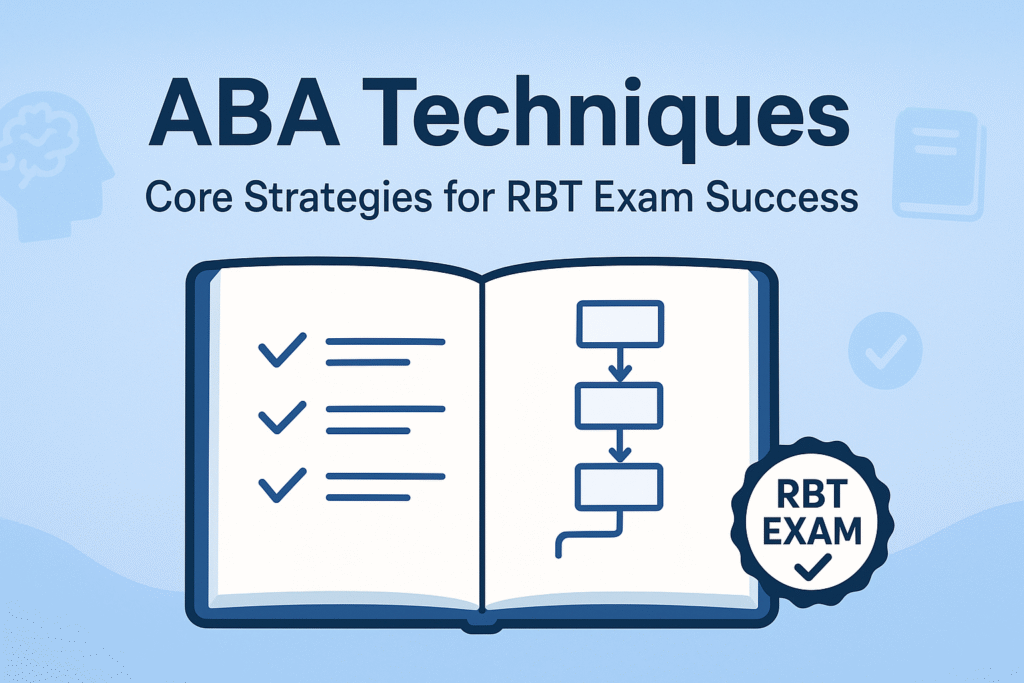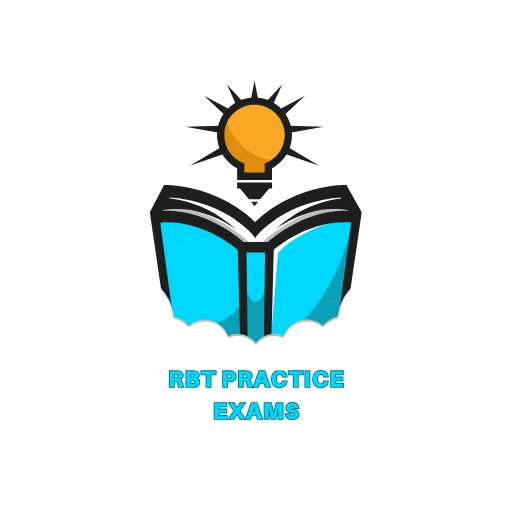Applied Behavior Analysis (ABA) is a science-backed approach that helps people learn new skills, improve communication, and manage behaviors. At the heart of ABA are specific ABA techniques that behavior analysts and Registered Behavior Technicians (RBTs) use in therapy sessions. These methods are practical, measurable, and adaptable across different settings, from classrooms to clinics and even at home.
Table of Contents

If you’re preparing for the RBT exam or simply want to understand how ABA works in real life, this guide will break down the most important ABA techniques, how they’re used, and why they matter.
What Are ABA Techniques?
ABA techniques are structured teaching and behavior management strategies based on the principles of applied behavior analysis. They use reinforcement, repetition, and data-driven adjustments to help individuals gain independence and improve daily life skills.
The BACB (Behavior Analyst Certification Board) outlines how these techniques are part of evidence-based interventions that RBTs must understand for certification. Whether it’s teaching a child to brush their teeth, encouraging social skills, or reducing problem behaviors, ABA techniques provide the step-by-step methods.
More on ABA: Applied Behavior Analysis – Wikipedia
Core ABA Techniques Explained
- Positive Reinforcement
One of the most common ABA techniques is positive reinforcement. It involves rewarding a desired behavior to increase the chances it will happen again. For example, a child who says “please” might receive praise, a sticker, or extra playtime. Over time, this strengthens polite communication.
- Discrete Trial Training (DTT)
DTT breaks down skills into small, structured steps. Each step is taught in a one-on-one setting, with clear instructions and immediate feedback. This is especially effective for teaching academic, language, and self-care skills.
- Natural Environment Teaching (NET)
Unlike DTT, NET uses everyday situations to teach skills. A therapist may encourage a child to request a favorite toy during playtime, making learning more natural and motivating.
- Shaping
Shaping helps individuals learn a new skill by reinforcing small steps toward the final behavior. For instance, if a child is learning to say “water,” the therapist may first reinforce attempts like “wa” or pointing to the cup, gradually expecting clearer speech.
- Chaining
Complex tasks like brushing teeth or tying shoes can feel overwhelming. Chaining breaks them into smaller, teachable steps. Forward chaining starts with the first step, while backward chaining begins with the last step, allowing the learner to experience success quickly.
- Prompting and Fading
Prompts (verbal, visual, or physical cues) help learners complete a task correctly. Over time, prompts are faded so the person can perform the skill independently. For example, guiding a child’s hand to zip a jacket eventually transitions to just a verbal reminder.
- Functional Communication Training (FCT)
Problem behaviors often happen because an individual doesn’t know how to communicate their needs. FCT teaches more appropriate ways, like asking for help instead of engaging in tantrums.
Why ABA Techniques Are Important in Therapy
ABA techniques are not just about teaching they are about empowering people to live more independently and comfortably. These methods:
Improve communication skills.
Reduce harmful or disruptive behaviors.
Increase academic and social learning.
Support everyday independence, from self-care to job readiness.
Parents, teachers, and therapists often see life-changing progress when ABA techniques are consistently applied.
ABA Techniques in RBT Exam Preparation
If you’re aiming to become an RBT, knowing these techniques is essential. The RBT exam tests your understanding of how and when to apply these strategies. Practicing with real-world examples will make the concepts stick.
Try a rbt practice exam to see how questions on reinforcement, prompting, and chaining appear. Use the rbt practice test to strengthen your knowledge of ABA concepts. Challenge yourself with a rbt mock test to simulate exam conditions.
By connecting theory to practice, you’ll feel more confident on exam day.
FAQs About ABA Techniques What is the most effective ABA technique?
There isn’t a single “best” technique. Positive reinforcement, DTT, and FCT are widely effective, but the right choice depends on the individual’s needs.
How do ABA techniques help with autism?
They provide structured ways to build communication, reduce problem behaviors, and support learning in children and adults with autism spectrum disorder (ASD).
Are ABA techniques only for children?
No. While ABA is commonly used with children, these techniques also support teens and adults in education, employment, and independent living.
What is the difference between DTT and NET?
DTT is structured and teacher-led, while NET is natural and learner-driven. Both are valuable, and therapists often combine them.
Conclusion: Mastering ABA Techniques for Success
ABA techniques are powerful tools that help individuals gain independence and improve quality of life. From reinforcement to shaping and communication training, these strategies form the backbone of ABA therapy and RBT practice.
If you’re preparing for your certification, now is the time to strengthen your knowledge. Start today with a rbt practice exam , take a rbt practice test , or challenge yourself with a rbt mock test to build confidence and skill.
Your journey to becoming an RBT starts with mastering these techniques and you’ve already taken the first step.
